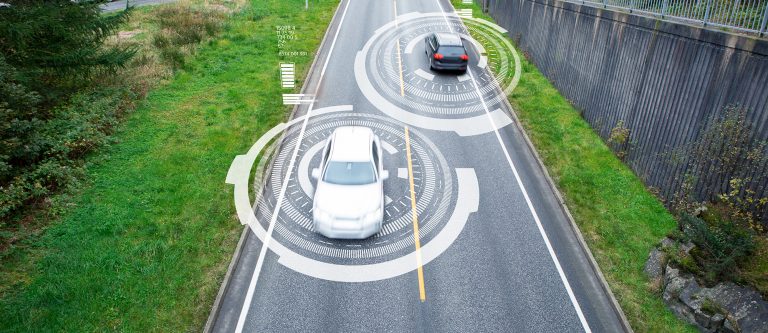Blog Post
Transforming Fleet Management with Telematics
By Shannon Keck
September 17, 2024

In today’s connected world, staying ahead isn’t just a competitive edge—it’s a necessity. With fleets becoming more connected and data-driven, fleet telematics has become the foundation of strategic decision-making. But what exactly is fleet telematics, and how is it changing the fleet industry?
What is Fleet Telematics?
Fleet telematics has evolved from a ‘nice to have’ to an important tool for fleet managers. The data collected helps optimize operations and drives business results. Telematics offers insights that span across key areas of fleet management. What sets telematics apart is its ability to unify vast amounts of data, giving fleet managers a holistic view of their operations. Telematics doesn’t just provide real-time data; it empowers fleets to anticipate future trends and make strategic decisions. The data gathered through telematics devices can inform decisions from maintenance schedules to optimizing driver routes, helping businesses cut costs, boost productivity, and increase fleet safety.
Enhancing Fleet Safety Through Telematics
Fleet safety is always at the top of any fleet manager’s mind, and telematics plays an important role in improving safety programs. Traditionally, tools like Motor Vehicle Records (MVRs) were used in fleet safety. However, these are often reactive, flagging unsafe driving behavior only after incidents occur.
Telematics changes that approach. It offers fleet managers access to predictive data, such as hard braking, speeding, and harsh acceleration. These indicators are precursors to accidents, enabling fleets to address risky behavior before an incident happens. For example, a driver who consistently brakes harshly could benefit from training before an accident occurs.
Incorporating telematics into your safety strategy doesn’t just help prevent accidents—it also improves driver behavior and reduces liability.
Example of Predictive Analytics for Vehicle Maintenance
Telematics isn’t just about driver behavior; it helps you stay on top of vehicle maintenance. Imagine being able to monitor diagnostic trouble codes (DTCs) in real-time. Instead of waiting for a vehicle to break down, telematics allows you to identify issues like engine problems before they lead to costly repairs.
For instance, low engine oil life or tire pressure data can be flagged early, prompting a visit to the maintenance shop before a breakdown occurs. Proactively monitoring this data can reduce expensive repairs, such as blown engines, and get vehicles back on the road faster.
Maximizing Asset Utilization for Sustainability and Efficiency
One often overlooked advantage of telematics is its ability to enhance asset utilization, which with sustainability goals. The data collected from vehicles can provide insights into how each asset is being used, from miles driven to idle times.
Sometimes, it’s the data you don’t get that’s the most revealing. For example, if you have a fleet location with idle vehicles and another location where vehicles are moving around the clock, telematics allows you to redistribute assets more effectively. This not only reduces costs by improving fleet efficiency but also minimizes your carbon footprint by optimizing vehicle use.
By optimizing existing fleet usage, fleets can lower costs and reduce emissions. This is a win-win for operational efficiency and environmental responsibility.
Final Thoughts on the Impact of Telematics
Telematics is no longer a luxury—it’s a must-have for fleet managers. Whether you’re focused on improving safety, reducing downtime, or cutting costs, the insights provided by telematics systems are invaluable.
We’ve seen firsthand the transformative power of telematics, helping clients achieve best-in-class safety programs and operational efficiency. By combining real-time data with proactive strategies, fleets can gain a competitive edge with telematics. Do you need help with your fleet telematics program? Contact Wheels to learn how we can help.

Wheels Senior
Product Manager
Editor’s Note: At the time of this interview, Shannon Keck served as Senior Product Manager at Wheels, specializing in overseeing our telematics solutions. Shannon has transitioned to a new role as Sales Manager. The insights shared in this blog reflect her extensive experience and expertise in product management and telematics.